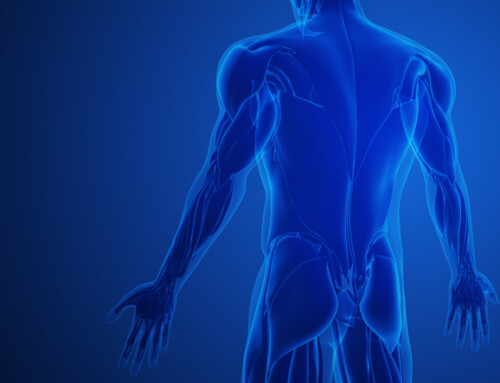by Emily Hoskinson, SPT
While the pregnancy journey is an amazing phase of a woman’s life, pregnancy has significant impacts on the musculoskeletal system as a whole, but specifically the “core.” Many women are given the green light by their doctors to start exercising again 6 weeks after delivery, but they are provided with no further guidelines. As a result, new mothers wanting to feel like themselves again start an exercise program that is too much too soon, setting themselves up for injury.
Pregnancy wreaks havoc on the core, which is essential for trunk stability. As the belly expands, the abdominals lengthen and stretch while the back muscles shorten. The linea alba, a thin band of connective tissue that runs down the front of the abdomen separating the left and right sides of the rectus abdominis (or the “six pack abs”) thins and separates. The ligaments and joints in the pelvis become very unstable, and the pelvic floor muscles often weaken under the weight of the fetus.
All of these major changes occurring in pregnancy and beyond leave the core unstable and open the door for back injuries, poor posture, and weakness. As a result, the goal of any core stability program should be restoring coordination and strength first. For best results, ditch the crunches and try the following exercises that focus on strengthening and stabilizing your deep core muscles. Be sure to master each exercise before progressing to the next one.
1. Diaphragmatic Breathing: Begin on your back with your knees bent. Place one hand on your chest and one hand on your belly. Breathe in and focus on breathing into your belly. As you exhale, pull the abdomen in and hold the contraction for 5 seconds. Perform 5-10 breaths several times a day. Progress to doing this sitting and standing.
2. Heel Slides: Lie on your back with your knees bent and arms at sides. Perform diaphragmatic breathing to engage your core. Think about pulling your belly button to your spine. As you inhale, slide one leg out until it is parallel to the floor and then exhale as you slide it back to the starting position. Perform again with the other leg. Work up to 20 repetitions.
3. Leg Extensions: Lie on your back with your knees bent and arms at your sides. Perform diaphragmatic breathing to engage your core. On the exhalation, raise one leg so your knee is in line with your hip and your shin is parallel to the floor (tabletop position). On inhalation, extend your lifted leg out as close to the floor as you can without arching your back. Exhale and return your leg to the starting position and return your foot to the floor. Switch sides and repeat. Start with 5 repetitions on each side without stopping and progress to 20 repetitions before moving to the next level.
4. Toe Taps: Lie on your back with your knees bent and arms at side. Begin with diaphragmatic breathing to engage the core. On exhalation, bring your legs up one at a time to tabletop position. Keeping your knees bent, slowly lower one foot down to the floor on and inhalation, and exhale to return to tabletop. Repeat on the opposite side, working up to 10 controlled repetitions on each leg.
5. Advanced Leg Extensions: Lie on your back with your knees bent and arms at side. Begin with diaphragmatic breathing to engage the core. On exhalation, bring your legs up one at a time to tabletop position. On inhalation, slowly extend one leg parallel to the floor. Exhale and return to starting position and switch sides. Work up to 10 repetitions on each leg. When you can perform this exercise 20 times on each leg without discomfort or arching the back, move to the next level.
6. Double Leg Lowers: Lie on your back with your knees bent and arms at your side. Begin with diaphragmatic breathing to engage the core. On an exhale, bring legs up one at a time to tabletop position. Squeeze your legs together and extend the legs so they are in line with your hips. Inhale, and slowly lower both legs toward the floor. Exhale and contract your abs to lift the legs up to starting position. Work up to 20 repetitions. If you experience any back pain, move back to the previous exercise.
Remember that patience is key. Do not rush through these exercises, and always be sure to master the lower level exercises before progressing. If you are continuing to experience pain or discomfort during these exercises, you should be evaluated for diastasis recti – a separation of the right and left abdominal muscles due to the natural belly growth from the developing fetus. Your doctor or a physical therapist trained in postpartum health can quickly perform this evaluation.
Citations:
1. Nichols N. Progressive exercises for post-pregnancy. NASM. 2021. Accessed June 25,2023. https://blog.nasm.org/progressive-exercises-for-post-pregnancy.
2. Citron B. Postpartum core recovery. ProNatal Fitness. June 9, 2023. Accessed June 25,2023. https://pronatalfitness.com/2021/03/10/postpartum-core-recovery/






